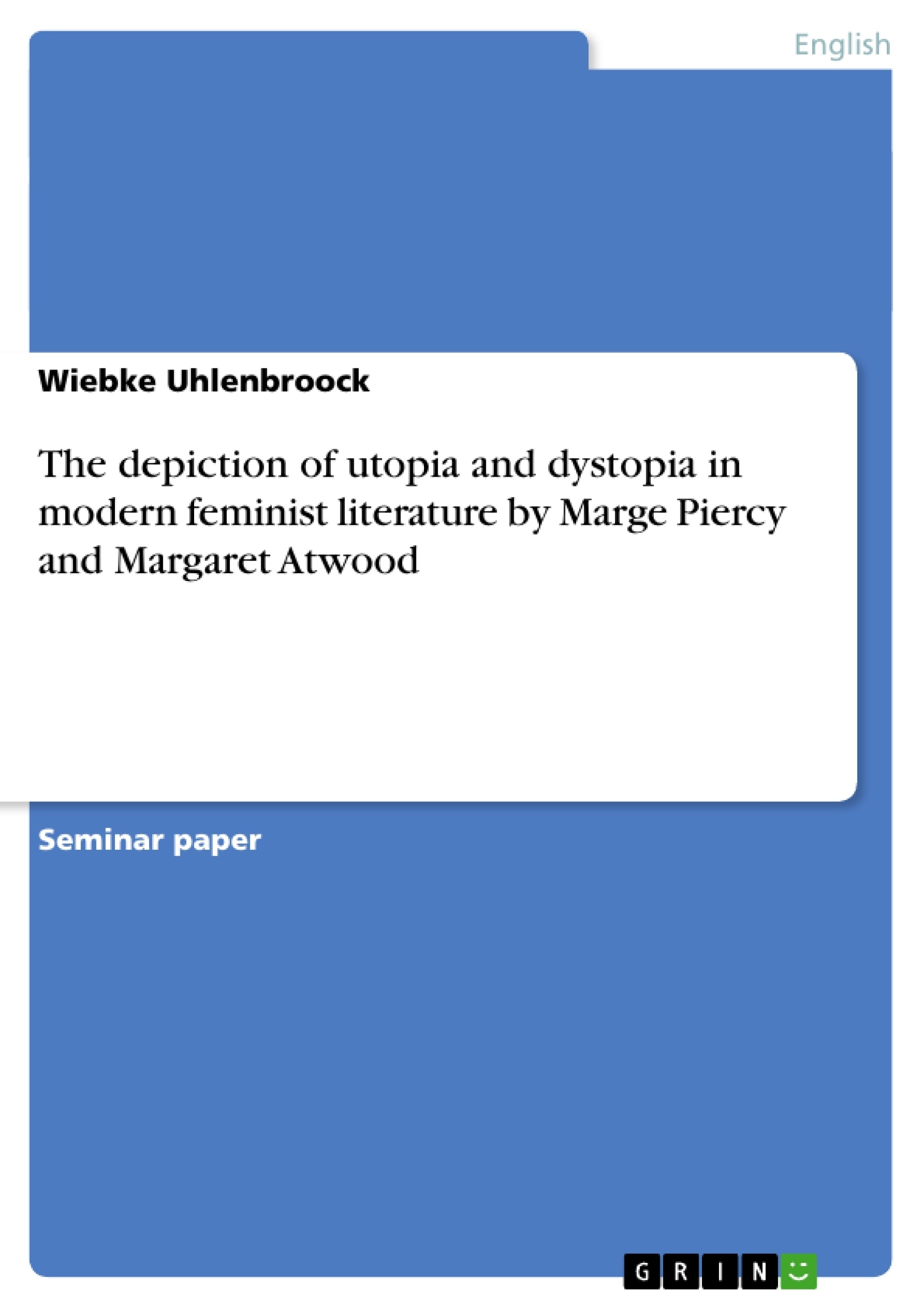Utopian fiction has been the center of much literary discussion ever since the publication of its first manifestion in Thomas More’s Utopia from 1516.
Utopian novels aim to show the reader alternate and improved concepts of life by emphasizing the moral and political inadequacies of the society to which it is contrasted. They are usually concerned with sociopolitical issues such as the organization of life in a society, its government and social structures and the distribution of wealth and power.
Inhaltsverzeichnis (Table of Contents)
- Introduction
- Utopia and Dystopia
- The Function of Utopian Fiction
- The Reversion of Utopia – Dystopian Fiction
- Utopia and Feminism
- Woman On the Edge of Time
- The Depiction of Utopia in the Plot of Woman On the Edge of Time
- Piercy’s Message in Woman On the Edge of Time
- The Contigency of Piercy’s Utopia
- Central Themes in Woman On the Edge of Time
- Gender Roles
- Ethnicity
- Age
- Societal Organization
- Summarizing the Discussion of Woman On the Edge of Time
- The Handmaid’s Tale
- The Depiction of Dystopia in the Plot of The Handmaid’s Tale
- Atwood’s Message
- Central Themes in The Handmaid’s Tale
- Gender Roles
- Societal Organization, Nature and Fundamentalism – A comparision of Woman on the Edge of Time and The Handmaid’s Tale
- The Daughter Theme
Zielsetzung und Themenschwerpunkte (Objectives and Key Themes)
This paper aims to analyze contemporary female utopian literature by critically discussing and comparing the novels Woman on the Edge of Time by Marge Piercy and The Handmaid's Tale by Margaret Atwood, focusing on their depiction of utopian and dystopian ideologies and the political messages they convey.
- The function of utopian fiction in relation to feminist themes.
- The depiction of utopia and dystopia in Woman on the Edge of Time and The Handmaid's Tale.
- The political messages conveyed through the novels' exploration of gender roles, societal organization, and hierarchies.
- The importance of individual action and critical thinking in shaping a better future.
- The contrast between the utopian model of Mattapoisett and the dystopian society of Gilead.
Zusammenfassung der Kapitel (Chapter Summaries)
The paper begins with a brief overview of the literary genre of utopian fiction and its connection to modern feminism. It then delves into a detailed analysis of Woman on the Edge of Time, exploring the utopian society of Mattapoisett and its contrast to the protagonist's contemporary reality. The chapter focuses on Piercy's political message, emphasizing the importance of individual action and the contingency of utopia.
The following chapter examines The Handmaid's Tale, highlighting the dystopian society of Gilead and its oppressive regime. The chapter analyzes Atwood's critique of fundamentalism, societal organization, and the role of women in Gilead. The chapter also emphasizes the importance of critical thinking and resistance in the face of oppression.
Schlüsselwörter (Keywords)
This paper focuses on the depiction of utopian and dystopian ideologies in modern feminist literature, with a specific focus on the novels Woman on the Edge of Time and The Handmaid's Tale. Key themes include feminist utopianism, dystopian fiction, gender roles, societal organization, individual agency, critical thinking, fundamentalism, and the role of women in shaping a better future.
- Arbeit zitieren
- Wiebke Uhlenbroock (Autor:in), 2007, The depiction of utopia and dystopia in modern feminist literature by Marge Piercy and Margaret Atwood, München, GRIN Verlag, https://www.grin.com/document/75594



